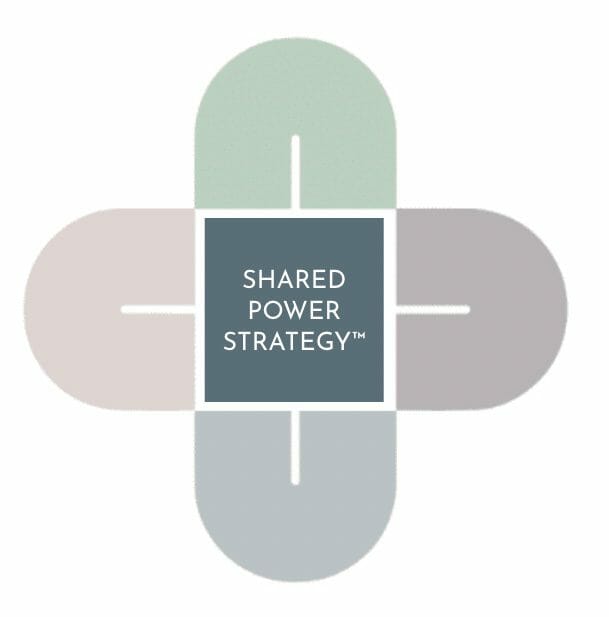Our Philosophy
Shared Power Strategy™
Redistribute the power to shape your nonprofit’s strategies to your stakeholders.

It’s time for a more inclusive approach to nonprofit strategy.
Despite the many important moves our sector has taken to double down on its commitment to equity and inclusion, so many organizations are still shaping their strategic plans (and communications, fundraising, and program plans, etc.) without meaningfully including the people they serve, and their other diverse stakeholders, in the process. This is no different from a business shaping its strategy without asking for input from its customers. It’s ineffective, inequitable, and it has to stop.
Enter: Shared Power StrategyTM. It’s a new approach to co-creating your nonprofit’s strategies hand-in-hand with your many diverse stakeholders, and aligning them once and for all to the priorities of the people and communities you exist to serve. It’s also the philosophy that guides all of our work here at Prosper Strategies.
Shared Power StrategyTM is based on five seemingly simple – but often difficult to follow – rules:
- We are accountable: we hold our strategies up to the scrutiny of our stakeholders
- We are beneficiary-centered: we put the priorities of those we serve first
- We are collaborative: we bring a wide range of diverse stakeholders together to shape our strategies
- We are decisive: we make difficult choices and keep moving forward
- We are ever-evolving: we seek ongoing input from our communities and continually hone our approach according to their feedback
Read more about what all these rules mean, and how to incorporate them into the way your nonprofit works, in the Shared Power StrategyTM Rule Book.
Shared Power StrategyTM in Practice
So what does the Shared Power StrategyTM philosophy look like in practice, in our work with nonprofit organizations like yours?
The answer is unique to each organization, because we always begin with learning as much as we can about your stakeholders, and then we design the perfect process for engaging them in developing your strategies based on their priorities and accessibility. That said, it often involves some combination of the following:
- A survey of your stakeholders to understand their perceptions and priorities before we begin strategic planning or other strategy development work
- Listening sessions with program participants, community members and board members part-way through strategy development, to get their feedback on strategic pillars
- Focus groups with donors, vendors or partners to test their reactions to new messaging or approaches
- Interviews with volunteers and staff members to get their perspectives on specific issues
- Stakeholder committees and board sub-committees that sit alongside a primary planning committee during the strategy development process and provide input and feedback along the way
- Sending parts of strategic plans, marketing plans and fundraising plans to program participants, community members and others for their review and feedback before those plans are finalized
- Sharing quarterly impact or progress reports with all your stakeholders (not just your funders) and asking for input on where they feel adjustments should be made
The Shared Power StrategyTM Rule Book
Learn more about the five rules every nonprofit needs to follow in order to build strategies that are more effective and equitable.
Access your free download now